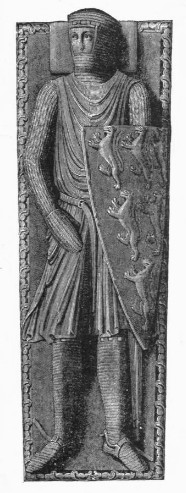William de Longespee, 3rd Earl of Salisbury
| William Longespée | |
|---|---|
| Earl of Salisbury | |

Drawing of effigy of William Longespée from his monument in Salisbury Cathedral
|
|
| Spouse(s) | Ela, Countess of Salisbury |
| Issue | |
| Noble family | Plantagenet |
| Father | Henry II, King of England |
| Mother | Ida de Tosny |
| Born | c. 1176 |
| Died | 7 March 1226 (aged 49–50) Salisbury Castle, Salisbury, Wiltshire, England |
William Longespée, 3rd Earl of Salisbury (c. 1176 – 7 March 1226) ("Long Sword", Latinised to de Longa Spatha) was an English noble, primarily remembered for his command of the English forces at the Battle of Damme and for remaining loyal to his half-brother, King John. His nickname "Longespée" is generally taken as a reference to his great size and the outsize weapons he wielded.
He was an illegitimate son of Henry II, King of England. His mother was unknown for many years until the discovery of a charter William made that mentions "Comitissa Ida, mater mea" (Countess Ida, my mother). This referred to Ida de Tosny, a member of the prominent Tosny (or Toesny) family, who had married Roger Bigod, 2nd Earl of Norfolk in 1181.
Prior to the discovery of the charter mentioning Countess Ida, speculation and folklore gave Rosamond Clifford, another mistress of Henry II, as William's mother. URL https://www.genealogieonline.nl/en/family-tree-fountaine-fontaine-fountain-lafontaine/P2800.php
King Henry acknowledged William as his son and gave him the honour of Appleby, Lincolnshire, in 1188. Eight years later, his half brother King Richard I married him to a great heiress, Ela of Salisbury, 3rd Countess of Salisbury.
During the reign of King John, Salisbury was at court on several important ceremonial occasions and held various offices: sheriff of Wiltshire; lieutenant of Gascony; constable of Dover; and Lord Warden of the Cinque Ports; and later warden of the Welsh Marches. He was appointed sheriff of Cambridgeshire and Huntingdonshire about 1213.
...
Wikipedia
